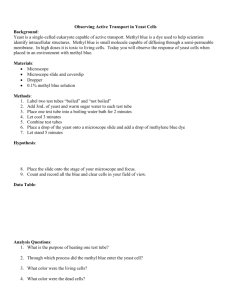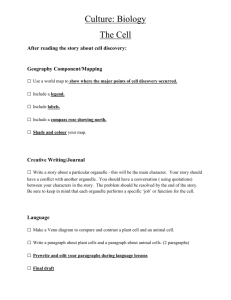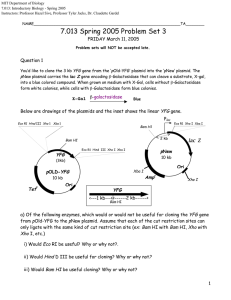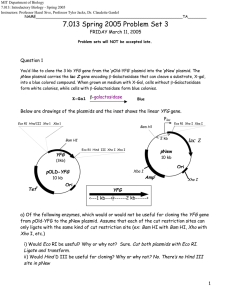report 1 guilherme siyang
advertisement
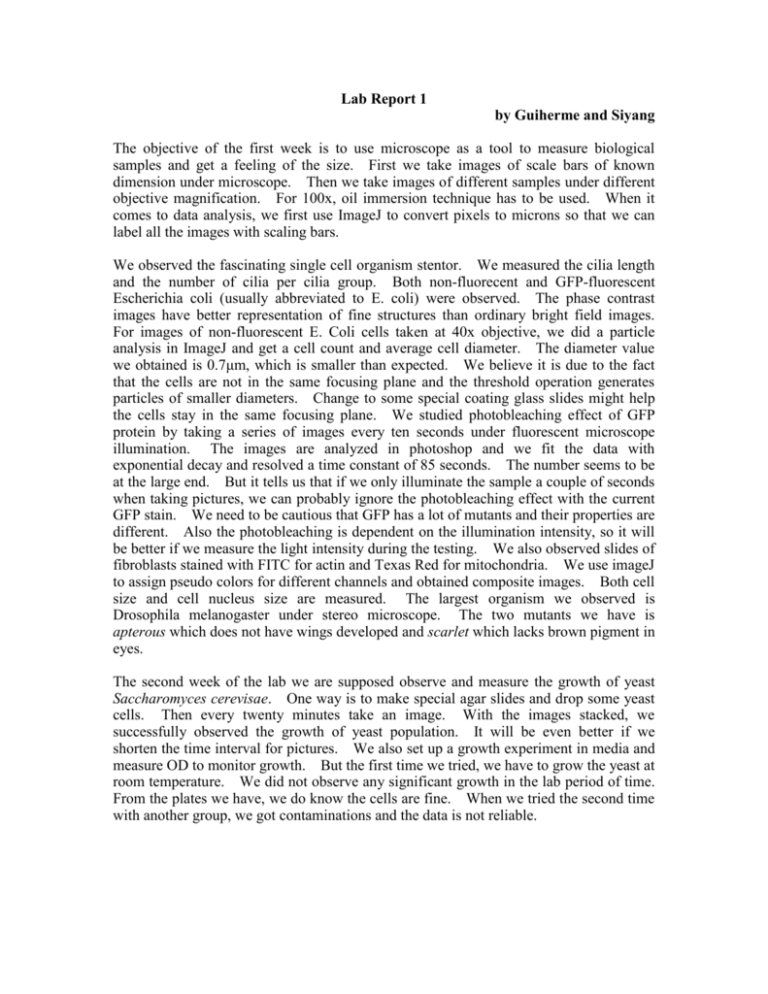
Lab Report 1 by Guiherme and Siyang The objective of the first week is to use microscope as a tool to measure biological samples and get a feeling of the size. First we take images of scale bars of known dimension under microscope. Then we take images of different samples under different objective magnification. For 100x, oil immersion technique has to be used. When it comes to data analysis, we first use ImageJ to convert pixels to microns so that we can label all the images with scaling bars. We observed the fascinating single cell organism stentor. We measured the cilia length and the number of cilia per cilia group. Both non-fluorecent and GFP-fluorescent Escherichia coli (usually abbreviated to E. coli) were observed. The phase contrast images have better representation of fine structures than ordinary bright field images. For images of non-fluorescent E. Coli cells taken at 40x objective, we did a particle analysis in ImageJ and get a cell count and average cell diameter. The diameter value we obtained is 0.7μm, which is smaller than expected. We believe it is due to the fact that the cells are not in the same focusing plane and the threshold operation generates particles of smaller diameters. Change to some special coating glass slides might help the cells stay in the same focusing plane. We studied photobleaching effect of GFP protein by taking a series of images every ten seconds under fluorescent microscope illumination. The images are analyzed in photoshop and we fit the data with exponential decay and resolved a time constant of 85 seconds. The number seems to be at the large end. But it tells us that if we only illuminate the sample a couple of seconds when taking pictures, we can probably ignore the photobleaching effect with the current GFP stain. We need to be cautious that GFP has a lot of mutants and their properties are different. Also the photobleaching is dependent on the illumination intensity, so it will be better if we measure the light intensity during the testing. We also observed slides of fibroblasts stained with FITC for actin and Texas Red for mitochondria. We use imageJ to assign pseudo colors for different channels and obtained composite images. Both cell size and cell nucleus size are measured. The largest organism we observed is Drosophila melanogaster under stereo microscope. The two mutants we have is apterous which does not have wings developed and scarlet which lacks brown pigment in eyes. The second week of the lab we are supposed observe and measure the growth of yeast Saccharomyces cerevisae. One way is to make special agar slides and drop some yeast cells. Then every twenty minutes take an image. With the images stacked, we successfully observed the growth of yeast population. It will be even better if we shorten the time interval for pictures. We also set up a growth experiment in media and measure OD to monitor growth. But the first time we tried, we have to grow the yeast at room temperature. We did not observe any significant growth in the lab period of time. From the plates we have, we do know the cells are fine. When we tried the second time with another group, we got contaminations and the data is not reliable.
